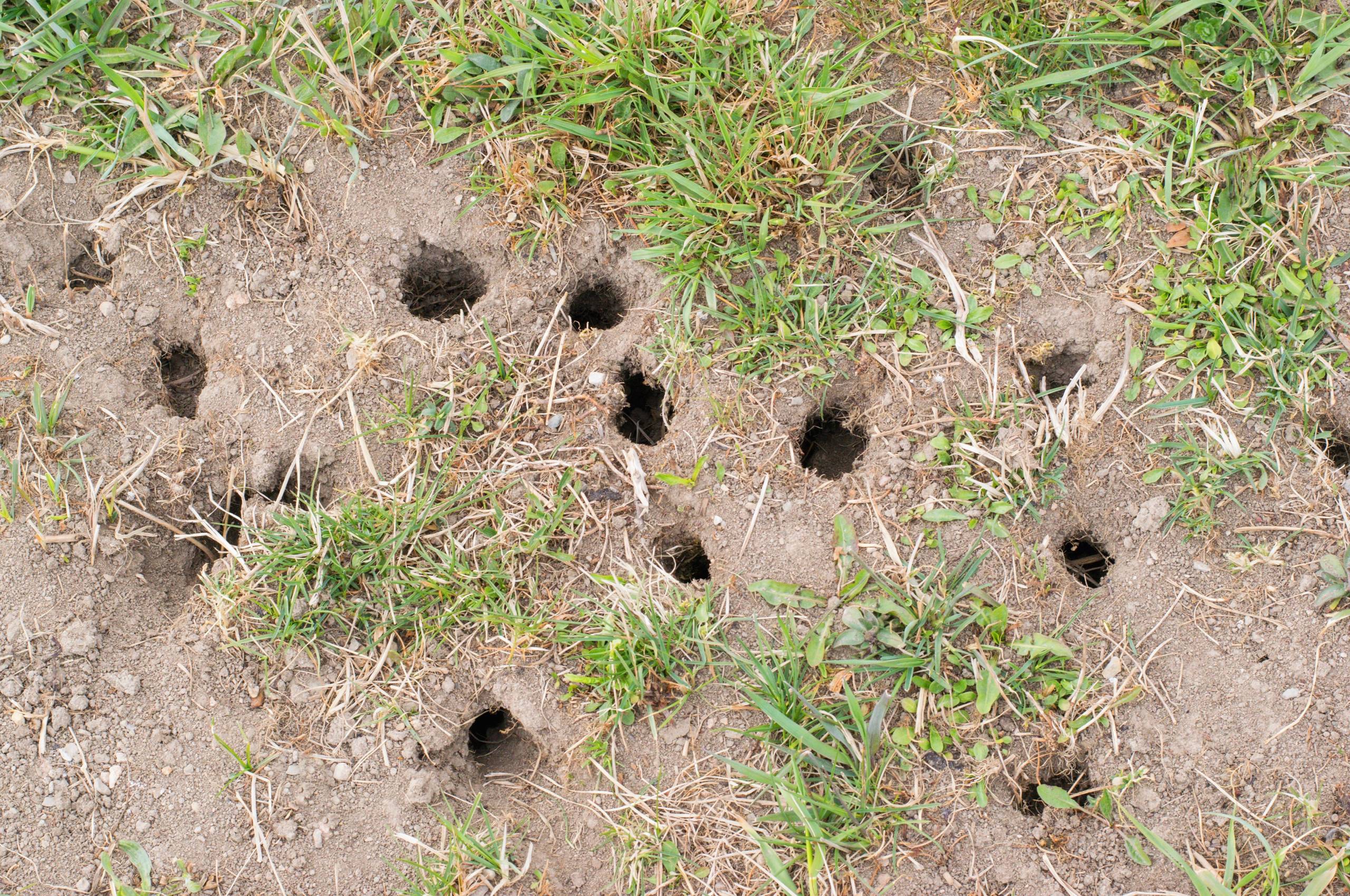
When the snow melts what will your lawn look like and what are you to do next?
In the fall your lawn looked awesome before the winter cold temperatures and snow. Like you, I have not seen green grass for extended periods this winter and that wreaks havoc, not just on us, but also on your lawn. Shortly all the snow which has piled up on everyone’s lawns will be thawing and melting. Once all the snow melts you will need to assess what impact on the turf the snow has created. I am sure you will see Snow Mold and Vole Damage.
Snow Mold
There are two types of Snow Mold. One is Gray Snow Mold or Typhula Blight and the other is Pink Snow Mold or Microdochium Patch. They have similar visual symptoms, but each affects the lawn in a different way. The disease is favored by prolonged periods of deep snow and can grow at temperatures slightly below freezing. Unfortunately it is too late to apply any fungicides. If you want to prevent the disease next year then apply Bonide Infuse Lawn & Landscape Granules in late fall.
Here are some other ways to prevent the disease:
•Avoid heavy applications of nitrogen in late fall.
•Continue to mow the grass until growth ceases to prevent a tall canopy.
•Avoid excessive thatch.
•Reduce compaction of snow by snowmobiles, skis, and animals.
•Prevent the formation of large snowdrifts by proper placement of snow fences, wind barriers, or similar structures.
This is what you can do this spring to bring your lawn back:
•Promote rapid drying and warming in the spring by snow removal and improving drainage.
•Promote new growth in the spring with light fertilization. I recommend Jonathan Green Organic Fertilizers.
•Reseed affected areas if regrowth does not occur. We have the right blend for you at either location.
•In the fall use Jonathan Green Winter Fertilizer to give your lawn added Potash, which can prevent the disease.
Vole Damage
Voles resembles that of mice, although voles tend to have longer fur and shorter tails. Voles are plant eaters and so with all the snow covering them, protecting them from predators, like hawks, they have had a delectable feast available this winter. According to the Massachusetts Audubon Society, prime vole habitat can support upwards of 300 voles per acre. vAs such, voles are prolific, reaching sexual maturity quickly and gestation periods are short. vA single, healthy female vole can give birth to several litters per year.
When the snow recedes and the turf first becomes visible in the spring, vole damage can appear dramatic, especially when coupled with other issues such as low temperature injury or snow mold. As noted above, however, voles feed only on turfgrass shoots; the vital crown tissue and root system are typically not disturbed. Very often, grass plants will re-grow in the damaged areas as the weather warms. Practices that can encourage rapid recovery include thorough raking (especially to remove accumulated excrement) and application of Jonathon Green Turf Fertilizer. For extra insurance or repair of areas that do not recover acceptably, overseed with a compatible mix of grasses.
Apply Bonide MoleMax granules to your lawn now so you can have them move somewhere else. You can also apply in fall to prevent them from staying in your yard.









